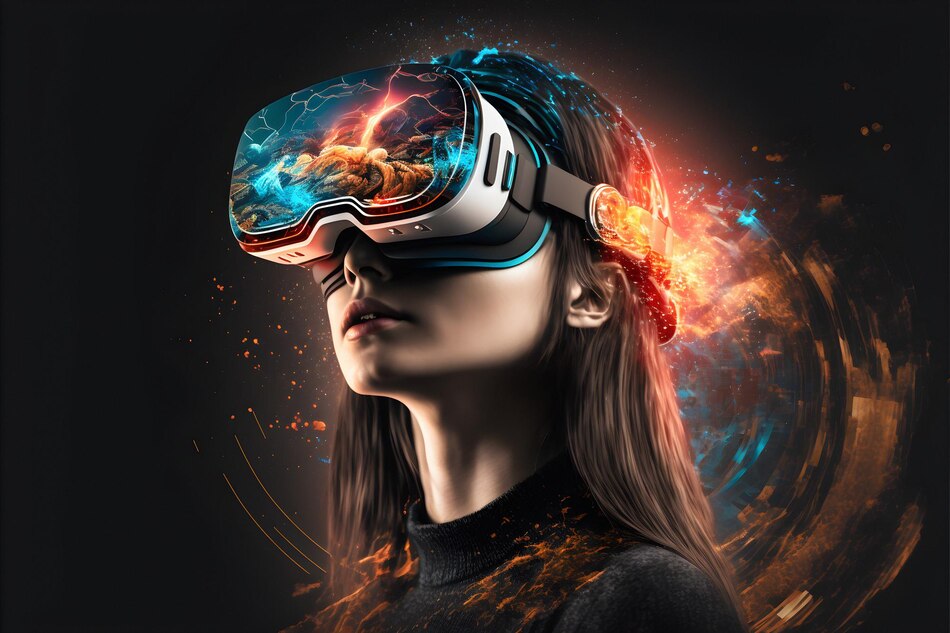Apple Vision Pro vs Meta Quest 3: Analyzing The AR/VR Showdown
Apple’s Vision Pro and Meta’s Quest 3 are two of the most critical new augmented and virtual reality devices on the market. This article breaks down the details of these cutting-edge headsets. Showing how they differ in the fast-paced world of AR and VR technology. Read More about Apple Vision Pro vs Meta Quest 3.
Price And Availability
When Apple releases the Vision Pro, it will cost a very high $3,499. Thus, making it a high-end augmented and virtual reality (AR/VR) device. This high price point shows that Apple is serious about cutting-edge technology. However, it also makes it hard for most people to buy, so it’s mostly for tech fans and early adopters. People are excitedly waiting for the Vision Pro to come out early next year. Because they want to be the first to experience the next generation of immersive experiences.
On the other hand, Meta’s Quest 3 changes things up with its much more reasonable $500 price tag. Meta plans to get more people to use VR and AR and this move fits with that. Meta’s long history in the VR/AR space makes the Quest 3 a strong competitor, especially since it is affordable. When it comes out later this year, the Quest 3 is meant to be a cheaper option for people, who want to have immersive experiences without spending a lot of money. The Vision Pro and Quest 3 will be in an exciting AR/VR battle because of how they compare in terms of price and availability.
Design And Hardware
Apple’s Vision Pro doesn’t just say it has cutting-edge technology; it has it built right in. The headset fits in perfectly with Apple’s style; it looks like a curved iPhone worn on the face, with hints of the Apple Watch. Although the design is elegant, it also puts a lot of emphasis on being helpful. Many cameras and sensors allow augmented reality to pass through, and the outside screen that shows the wearer’s eyes and facial expressions adds a new level of interaction. Apple’s choice not to use a traditional controller but instead use voice commands, finger and hand gestures, and other body language shows how much the company cares about making its products accessible for people to use.
On the other hand, Meta’s Quest 3 has a thinner design and claims to be 40% lighter than its predecessor, the Quest 2. The Quest 3’s scenario puts comfort and usefulness first, so it’s not as sleek and metal as the Vision Pro. Full-color augmented reality passthrough is possible with external cameras and a depth sensor. This is a significant improvement over the Quest 2. Meta’s Quest is all about gaming and immersive app experiences, so the upgraded motion controllers are included. Different design choices were made for the Vision Pro and the Quest 3, reflecting other ideas and preferences within the AR/VR community.
Display
The quality of the display is essential for AR/VR, and Apple’s Vision Pro doesn’t disappoint you. Two internal shows give each eye an image of more than 4K resolution. Even though the official specs haven’t come out yet, Apple says the screen has over 23 million pixels. This means the graphics are self-explanatory, making the experience more immersive for users. The Vision Pro promises to change how people see AR and VR content by setting a new standard for display quality.
Meta’s Quest 3 doesn’t give away many specifics, but it says its screen will be sharper than the Quest 2’s. The Quest 2’s resolution of 1,832 x 1,920 per eye is better than 4K, and early impressions of the Quest 3 suggest it might not significantly improve sharpness. Potential buyers are still interested in how the Vision Pro and Quest 3 compare display quality. Both headsets are trying to be the best in terms of visual accuracy.
Power And Battery
The Vision Pro and Quest 3 have different amounts of power, which shows how the technology behind these AR/VR experiences works. The Apple Vision Pro uses the class-leading M2 processor from recent Macs, giving it the same computing power as high-end computers. With the R1 chip taking care of data from cameras and sensors, the Vision Pro is a technological powerhouse. The Vision Pro doesn’t have a built-in battery; instead, it uses a plug-in pack that gives it about two hours of power. This approach fits Apple’s focus on clean design and ease of use.
The Meta Quest 3 uses the Snapdragon Qualcomm XR2 chip. This chip was originally made for smartphones, but has been tweaked to work with VR. It says it will have twice as good graphics as the Quest 2, but it might have less raw computing power than the Vision Pro. The Quest 3 relies on smartphone technology because it is practical and balances performance and efficiency well. Different management and battery solutions affect the user experience and limit the complexity of games and apps.
Software And Content
The software philosophy of Vision Pro and Quest 3 makes what they are meant to be used for even clearer. Apple markets the Vision Pro as a fun device and a professional computer that can be used in space. The Vision Pro lets you switch between work and play by running existing Apple Arcade games and hosting new VR and AR games. It can connect to Macs and work with iOS apps to do more than play games. It gives you a complete digital experience.
Meta’s Quest 3, on the other hand, makes it even more of a gaming device. Beat Saber, Resident Evil 4, Pistol Whip, and Superhot VR are popular VR games already available on the Quest platform. With better motion controllers made for fun and immersive apps, the Quest 3 makes this gaming experience even better. Both headsets can be used for work and to watch videos. But the differences in their software make them better for different users.
Conclusion
The fight between Apple’s Vision Pro and Meta’s Quest 3 marks the beginning of a time when AR/VR technology will change significantly. As people eagerly await the release of these headsets, the decision-making process gets tougher. Users are about to start a new era of immersive experiences. Whether they choose the Vision Pro for its high-end features or the Quest 3 for its low cost and easy access. The changing environment means improvements will continue. So watching for in-depth comparisons and new information as the AR/VR story continues is essential. This article concludes the topic for Apple Vision Pro vs Meta Quest 3. Read More about other tech trends here.





